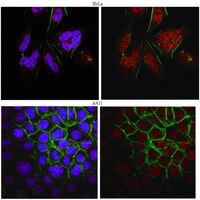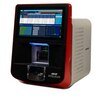MABC161 Sigma-AldrichAnti-BRCA1 Antibody, clone MS13
Anti-BRCA1 Antibody, clone MS13 detects level of BRCA1 & has been published & validated for use in Western Blotting, IHC, ICC.
More>> Anti-BRCA1 Antibody, clone MS13 detects level of BRCA1 & has been published & validated for use in Western Blotting, IHC, ICC. Less<<Recommended Products
Overview
| Replacement Information |
|---|
Key Specifications Table
| Species Reactivity | Key Applications | Host | Format | Antibody Type |
|---|---|---|---|---|
| H | WB, IHC, ICC | M | Purified | Monoclonal Antibody |
| References |
|---|
| Product Information | |
|---|---|
| Format | Purified |
| Control |
|
| Presentation | Purified mouse monoclonal IgG1κ in buffer containing 0.1 M Tris-Glycine (pH 7.4), 150 mM NaCl with 0.05% sodium azide. |
| Quality Level | MQ100 |
| Physicochemical Information |
|---|
| Dimensions |
|---|
| Materials Information |
|---|
| Toxicological Information |
|---|
| Safety Information according to GHS |
|---|
| Safety Information |
|---|
| Storage and Shipping Information | |
|---|---|
| Storage Conditions | Stable for 1 year at 2-8°C from date of receipt. |
| Packaging Information | |
|---|---|
| Material Size | 100 µg |
| Transport Information |
|---|
| Supplemental Information |
|---|
| Specifications |
|---|
| Global Trade Item Number | |
|---|---|
| Catalog Number | GTIN |
| MABC161 | 04053252595950 |
Documentation
Anti-BRCA1 Antibody, clone MS13 SDS
| Title |
|---|
Anti-BRCA1 Antibody, clone MS13 Certificates of Analysis
| Title | Lot Number |
|---|---|
| Anti-BRCA1, clone MS13 - 2135131 | 2135131 |
| Anti-BRCA1, clone MS13 - 3266835 | 3266835 |
| Anti-BRCA1, clone MS13 - 3352424 | 3352424 |
| Anti-BRCA1, clone MS13 -2518495 | 2518495 |
| Anti-BRCA1, clone MS13 -2686145 | 2686145 |
| Anti-BRCA1, clone MS13 -2807749 | 2807749 |
| Anti-BRCA1, clone MS13 Monoclonal Antibody | 3143256 |
| Anti-BRCA1, clone MS13 Monoclonal Antibody | 2895618 |
| Anti-BRCA1, clone MS13 Monoclonal Antibody | 2990197 |



















